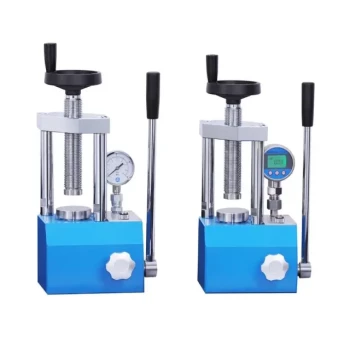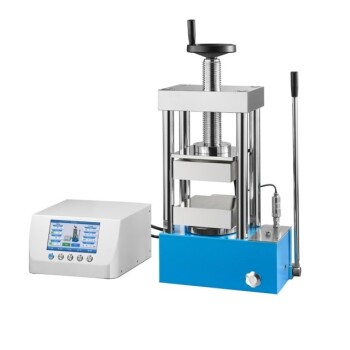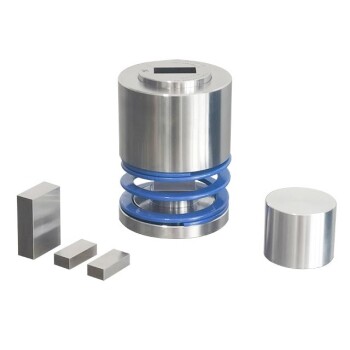Understanding the required force when selecting a lab hydraulic press is crucial for achieving accurate, repeatable results while protecting both samples and equipment. This knowledge directly impacts experimental integrity, operational efficiency, and long-term cost-effectiveness in laboratory settings. Proper force calibration prevents sample damage from excessive pressure while ensuring sufficient compression for valid measurements—a fundamental requirement in materials testing, pharmaceutical development, and nanotechnology research where precision dictates outcomes.
Key Points Explained:
-
Sample Integrity Preservation
- Over-pressurization risks: Exceeding a material's compressive strength can fracture brittle samples (e.g., ceramic pellets) or alter polymer structures
- Under-pressurization consequences: Insufficient force may cause incomplete pellet formation in FTIR spectroscopy or uneven thickness in battery electrode fabrication
- Example: Pharmaceutical tablet presses require ±2% force accuracy to maintain dissolution rate consistency
-
Equipment Longevity & Safety
- Continuous operation above 80% of a press's rated capacity accelerates seal wear and hydraulic fluid degradation
- Safety margins: ASTM E4 standards recommend selecting presses with 25-50% higher capacity than peak experimental needs
- Overload scenarios can bend platens or damage load cells—costly repairs that halt lab operations
-
Process Standardization
- Reproducible research demands exact force parameters across trials (e.g., 10-ton compression for all graphene oxide samples)
- Force variability >5% may invalidate comparative studies in metallurgy or composite materials research
- Digital pressure gauges with 0.1% resolution now enable finer control than analog systems
-
Application-Specific Considerations
- KBr pellet preparation typically needs 8-10 tons, while nanoindentation samples may require <1 ton
- Temperature-coupled systems (hot presses) often need 20-30% extra capacity to compensate for thermal expansion
- Dynamic loading applications (e.g., impact studies) demand presses with rapid response dampers
-
Economic & Ergonomic Factors
- Oversized presses incur 30-50% higher energy costs and require larger lab footprints
- Manual hydraulic models become impractical above 20-ton needs due to operator fatigue
- Automated systems with programmable force profiles reduce human error but require precise force calibration
Have you considered how force requirements might evolve for your lab's future projects? Modern lab hydraulic press systems now integrate smart sensors and AI-driven pressure adjustment, potentially reducing selection complexity while expanding application ranges. These technologies are quietly transforming sample preparation from an art to an exact science.
Summary Table:
| Key Consideration | Impact | Example Applications |
|---|---|---|
| Sample Integrity | Prevents damage or incomplete formation | Pharmaceutical tablets, ceramic pellets |
| Equipment Longevity | Avoids premature wear and safety risks | Metallurgy, composite materials |
| Process Standardization | Ensures reproducible research results | Graphene oxide studies, battery electrodes |
| Application Needs | Matches force to specific requirements | KBr pellets, nanoindentation |
| Economic Factors | Optimizes cost and lab space usage | High-throughput labs, limited spaces |
Upgrade your lab's precision with the right hydraulic press
At KINTEK, we specialize in lab press machines (including automatic, isostatic, and heated lab presses) tailored to your exact force requirements. Our experts will help you:
- Select equipment with optimal force capacity for your samples
- Implement smart press systems with digital control
- Future-proof your lab with scalable solutions
Contact our team today for a personalized consultation on achieving perfect compression every time.



















